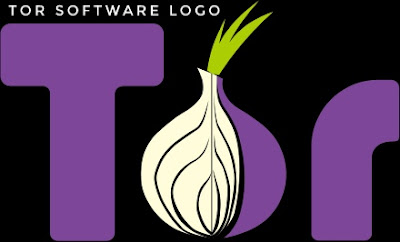

The dark web is a part of the internet that isn't indexed by search engines.
The dark web is the world wide web content that exists on darknets: overlay networks that use the Internet but require specific software, configurations, or authorization to access.
Through the dark web, private computer networks can communicate and conduct business anonymously without divulging identifying information, such as a user's location. The dark web forms a small part of the deep web, the part of the Web not indexed by web search engines, although sometimes the term deep web is mistakenly used to refer specifically to the dark web.
The darknets which constitute the dark web include small, friend-to-friend peer-to-peer networks, as well as large, popular networks such as Tor, Freenet, I2P, and Riffle operated by public organizations and individuals. Users of the dark web refer to the regular web as Clearnet due to its unencrypted nature. The Tor dark web or onionland uses the traffic anonymization technique of onion routing under the network's top-level domain suffix .onion.
Deep vs Dark web and Clear web
The terms “deep web” and “dark web” are sometimes used interchangeably, but they are not the same. Deep web refers to anything on the internet that is not indexed by and, therefore, accessible via a search engine like Google. Deep web content includes anything behind a paywall or requires sign-in credentials. It also includes any content that its owners have blocked web crawlers from indexing.
Estimates place the size of the deep web at between 96% and 99% of the internet. Only a tiny portion of the internet is accessible through a standard web browser—generally known as the “clear web” some time surface web.
No one really knows the size of the dark web, but most estimates put it at around 5% of the total internet. Again, not all the dark web is used for illicit purposes despite its ominous-sounding name.
Dark web browsers
Accessing the dark web requires the use of an anonymizing browser called Tor. The Tor browser routes your web page requests through a series of proxy servers operated by thousands of volunteers around the globe, rendering your IP address unidentifiable and untraceable. Tor works like magic, but the result is an experience that’s like the dark web itself: unpredictable, unreliable and maddeningly slow.
Dark web serch engenis
Dark web search engines exist, but even the best are challenged to keep up with the constantly shifting landscape. The experience is reminiscent of searching the web in the late 1990s. Even one of the best search engines, called Grams, returns results that are repetitive and often irrelevant to the query. Link lists like The Hidden Wiki are another option, but even indices also return a frustrating number of timed-out connections and 404 errors.
Dark web websites
Dark web websites look pretty much like any other site, but there are important differences. One is the naming structure. Instead of ending in .com or .co, dark web websites end in .onion. That’s “a special-use top level domain suffix designating an anonymous hidden service reachable via the Tor network,” according to Wikipedia. Browsers with the appropriate proxy can reach these sites, but others can’t.
Dark web websites also use a scrambled naming structure that creates URLs that are often impossible to remember. For example, a popular commerce site called Dream Market goes by the unintelligible address of “eajwlvm3z2lcca76.onion.”
Many dark websites are set up by scammers, who constantly move around to avoid the wrath of their victims. Even commerce sites that may have existed for a year or more can suddenly disappear if the owners decide to cash in and flee with the escrow money they’re holding on behalf of customers.
For sale in the dark web
The dark web has flourished thanks to bitcoin, the crypto-currency that enables two parties to conduct a trusted transaction without knowing each other’s identity. “Bitcoin has been a major factor in the growth of the dark web, and the dark web has been a big factor in the growth of bitcoin,” says Tiquet.
Nearly all dark web commerce sites conduct transactions in bitcoin or some variant, but that doesn’t mean it’s safe to do business there. The inherent anonymity of the place attracts scammers and thieves, but what do you expect when buying guns or drugs is your objective?
Dark web commerce sites have the same features as any e-retail operation, including ratings/reviews, shopping carts and forums, but there are important differences. One is quality control. When both buyers and sellers are anonymous, the credibility of any ratings system is dubious. Ratings are easily manipulated, and even sellers with long track records have been known to suddenly disappear with their customers’ crypto-coins, only to set up shop later under a different alias.
Some time secrecy compromise on dark web
If you find your own information on the dark web, there’s precious little you can do about it, but at least you’ll know you’ve been compromised. Bottom line: If you can tolerate the lousy performance, unpredictable availability, and occasional shock factor of the dark web, it’s worth a visit. Just don’t buy anything there.



-01.jpeg)
.jpeg)

